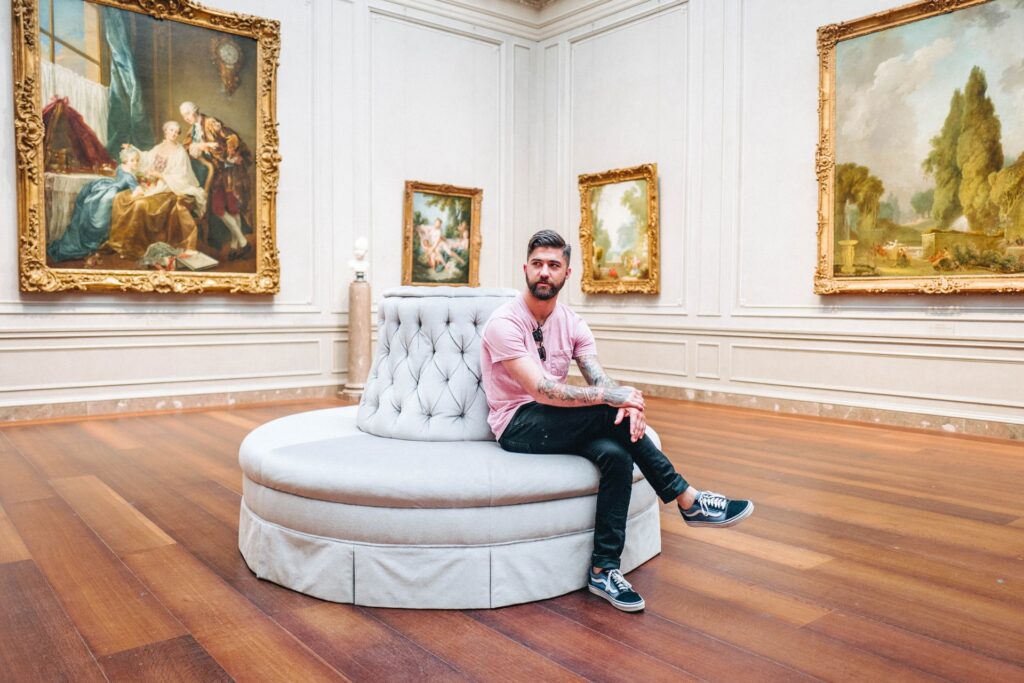It is no secret that traveling is a source of sheer inspiration. When immersing yourself in new and exciting environments, you maintain discipline that is conducive to the creative flow and that can inspire you to transform your experience into art. However, developing your artistic creativity while traveling may occur to be tricky, so here you have some essential information on how to take your passion on the road.
8 tips on how to travel with art
1. Travel light

Image source: unsplash.com
Traveling with a minimum load or minimum luggage is always a good idea, especially when it comes to traveling with artworks and artist supplies. The first rule is the shorter your trip is going to be, the fewer supplies you should take with you. However, how can you decide what to take if you need almost everything from your studio? It may be hard for the first time, but try to think basic, regardless of your medium. For instance, if you are a wet media artist, take paper or canvas, a couple of brushes, basic colors, and something that will help you clean your supplies or store them until you can clean them. If you are a dry media artist, it may be a bit easier. A few pencils and a pad of paper can be enough.
2. Bring your favorite materials
Avoid the mistake of buying a new travel sketchbook and trying to do all your drawings in it. The paper can be completely different from the paper you usually draw on. This way, you may feel frustrated and super unhappy with all your pictures in the end. Although artists should not blame their tools for their failure, make sure your marks won’t look too dark or impossible to shade on a low-quality piece of paper. Always have your favorite paper and familiar media with you to create beautiful images of unfamiliar places and things.
On the other hand, if you just need to scribble down your ideas, a new inexpensive sketchbook or scrap paper can be quite handy during your travels. Thus, you won’t have to worry about losing your favorite expensive sketchbook this way.
3. Consciously resource materials
There is an abundance of resources offered to people by nature. Your responsibility is to be flexible and mindful about how you source them. A great idea is to create your art out of things you manage to find from the environment, such as feathers, vines, shells, upcycled items, etc. Be creative not only in producing artwork but also in finding alternative resources. Think outside the box!
4. Use your free time for art
You should not limit yourself by drawing, painting, or sketching only on schedule. You certainly need to plan your art time when doing a little Plein air work or working on a take-along project. But such strict time management has nothing to do with traveling with art. The perfect time for quick sketches is when it is quiet enough to concentrate. For example, try drawing early in the morning before engaging in a wide range of other activities.
5. Take photographs

Image source: pexels.com
It is definitely worth traveling with a laptop or good quality camera to document your artworks or take some photos. Besides, this will help you take some snapshots of an area not suitable for sitting and creating and refer to it at a later date. Make sure your camera or phone is charged up, as you never know when you can come across a good view. Plus, take a couple of SD memory cards and hard drives to back up your shootings and not run out of memory at the strategic moment. This may also be useful if your equipment breaks. In this case, you can always put your SD memory cards in a friend’s camera. Travel photographs will certainly provide you with inspiration for years to come.
6. Pack and transport art carefully
When traveling with art, proper packaging can make a difference. Nobody wants to see their works damaged or broken. For packing your pieces, you need some basic tools and equipment: boxes in multiple sizes, bubble wrap, packing tape, artist tape, brown packing paper, and markers. Pack each item in a separate box. The box is supposed to be slightly larger than the piece. Use artist tape to mark the surface of your artwork with an ‘X’ if it has a glass cover. Wrap it in several layers of bubble wrap. Purchase specialized cardboard corner protectors for some extra protection. Add crumbled newspaper or bubble wrap to pad the piece and make sure nothing can shift inside the box. Then, seal the box thoroughly. Also, according to Fine Art Shippers, it is better to transport a highly valuable and fragile artwork in a wooden crate that you can build yourself or order from a specialized shipping company. When everything is ready, load the box/crate on the moving truck or your car and ensure it won’t fall over.
7. Share your creativity
When you travel with art, do not forget to share your creativity and inspire others to explore the world. Host workshops, post your artworks online, collaborate with other artists, and be flexible and open to suggestions. Integrate your experiences of different cultures and your travels into what you create and allow other people to observe this process.
One more necessary piece of equipment is Esim by Wifimap.io. It is designed for travelling all over the world with internet access that allows you to share your photos with followers online anytime, anywhere.
8. Enjoy the moment
It is no secret that one of the most rewarding ways to make art is drawing while traveling. This creates unforgettable memories of the places you have visited and want to remember. However, it may occur to be more challenging than drawing at home or in a studio, as you simply cannot plan everything. You need to understand that art is not supposed to be perfect and flawless, so do not get stressed about things that may go wrong. Focus on capturing your feelings and having fun instead.
Traveling with art is not easy, especially if you are going to travel on a budget, but it is still a perfect way to expand the horizons of your creativity and talent. Hopefully, these tips will help you make this experience inspiring and relaxing!




























